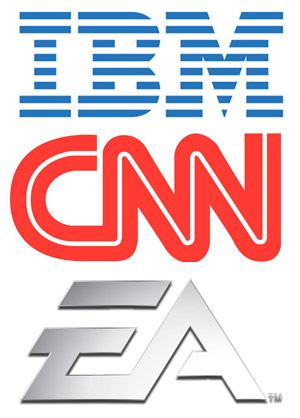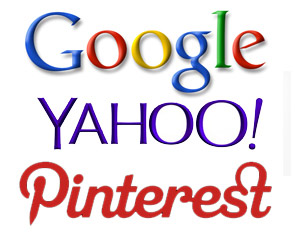In the first 33 minutes after waking up, Mark McGuire, author of Logo Design Love, recorded that he had already been /exposed to 33 logos. That’s one logo per minute! It comes as no surprise, then, that the average consumer observes dozens of logos throughout their everyday lives.
Logos are engrained in our society and we, as designers, need to make sure our logos stand out amongst the hordes of others out there.
What is a logo?
A logo is the visual identifier for a company or organization. A logo encompasses a company’s essence and portrays that particular brand in one single graphic element. It is arguably one of the most valuable assets a company can own. A well thought-out and well-designed logo communicates your client’s brand clearly and associates their message with positive thoughts.
According to Robert Hacala, a truly successful logo needs to be:
- Simple
- Unique
- Memorable
- Versatile
- Work without color
As a graphic designer, there’s a good chance one of your projects will eventually involve logo design. Below are some suggestions on how to work through these logo creation challenges.
Do Your Research
Part of the logo design process is deciding on which logo style to use. There are various styles to consider when creating a logo. To select the proper style, a designer should record all of the necessary background information about the client and brand.
First and foremost, research your client and their audience before you begin your work. There are a multitude of companies working in thousands of industries, and each one has a specific tone and feel. Doing your own research about the company or industry can further enhance your design.
In the initial stages, it’s beneficial to record and compare similar trends within a specific field. This helps get the creative gears turning. If you flush out this information first, it will greatly streamline your design process.
What are the different types of logo styles?
According to Logo Lounge, an industry leader in logo galleries, there are quite a few styles. Here are some logo styles to mull over:
- Initials or Lettermarks
- Wordmarks
- Enclosures
- Calligraphy, Typography, or Script
- Crests
- Emblem
- Stamps
- Brandmark or Symbol
- Combination Marks
- Shapes
- Minimal
There are also sub-genre styles found within these logo themes, such as:
- Sports styles
- People trends
- Animals
- Vintage techniques
- Flat–style
- Negative space
- Nature or natural oriented
- Arts
- Food
- Structures
- Mythological
All of these styles generally relate to a specific industry, so do your research before jumping into a design.
Some Examples
Brandmark
Companies such as IBM, CNN, and EA incorporate brandmark style logos into their branding. These marks are unique and clearly portray their identity.

Emblem
A private school would most likely use a crest or emblem logo style. Emblem style logos are used for companies such as Starbucks and Harley-Davidson, and for organizations, like the FBI.

Wordmark
Google, Yahoo, and Pinterest brilliantly use their wordmark logo stylizing. These wordmark brands mesh their individual styles with their whole company name as their logo.

Symbol
Apple, a technology company, uses just the apple icon. This simple and clean apple icon is a symbol, a brandmark style logo, and in this particular case, it has been developed over many years.
Why Choosing a Style is So Important
Each style of logo design has a general encompassing feel and emotive response to it. It’s very important to do your research into each of your clients’ industries before deciding on which style to use. Make the logo unique, but also make it functional.
Industry ‘looks and feels’ are based on how customers view and associate these brands in everyday life. A good designer will try to put themselves in the consumer’s shoes and get in the mindset of what they’ll pick up on as they view your logo design.
One reason for a predetermined association would be the emotions related with that industry. A construction company, for example, is less likely to sport a script based, calligraphy font logo. This script probably doesn’t portray construction qualities. Think about it—when you think of construction, some terms that may come to mind include tough, rough, solidified, and trustworthy, etc. There are other choices in logo style that would better fit this industry, including enclosures, wordmarks, or stamps.
This style association is not the only reason for these industry generalizations, however. Color is a huge part of the style choice.
Thinking back to the construction example, which colors were you envisioning in their logo? Pink? Purple? No. You were probably envisioning colors with less whimsical tones such as orange, black, or dark green. Color choices within logo styles are a huge factor in determining the final design of your client’s logo. Yes, a good logo should work in black and white. It should be recognizable enough to not need this added color feature. However, color choice does play a major role in which emotive response users or customers have when they view your logo.
“The implications of color’s effect on people’s emotions are far reaching, and understanding your customers’ connections to certain colors could increase the effectiveness of your company’s branding methods,” says neuroscientist Bevil Conway. Some companies have their logo colors directly related to their industries.
How Colors Affect a Logo
The color red is associated with heat and high arousal. It’s used to stimulate appetite, increase heart rate, create urgency (like in clearance sales), and many other emotive responses. Companies such as McDonalds, Red Robin, and Coca Cola use red to induce the hunger aspect of it. CNN, Exxon, and TIME use red to infer urgency, or direct attention to their importance.
Each color has a relationship with an industry, and finding a balance with this portion of the logo style is crucial. For more information, check out Zion & Zion’s article on color meaning and brands associated with those colors.
Side note: Do not rely on color for your logo. Instead, use it as a tool in the final stages of your design to unify the tone being personified.
Time to Get Started
Compiling the industry background information and style guidelines together can be a frustrating task, prolonging the creative portion of a project. But you CAN do it! Deciding on what logo style to use is the first step. Choosing your industry color is next.
To add one more piece to the puzzle… try to design something different, unique, and out of the box!
Now that we’ve discussed the general design styles, industry associations, and color meaning, try to distinguish your logo from the rest. It’s your time to be innovative and stand out. As a designer, use this knowledge and expand upon it.
As Jarkko Laine puts it: “Try a variety of styles to find the one that works best for your client. Try different color combinations until you find one that makes your design truly original.” Designers go through many variations before finding the right design, so don’t get discouraged! Keep pushing the design and rely on your research. Strike a harmonious balance with the structure style, industry style, and color. And remember to keep it simple.
Also remember to work the design down to the bare bones and use just what makes it noteworthy. It needs to be memorable but also efficient (practical and scale well). If you are stuck or need more reference to other logo styles, please go check out other designs (just for inspiration, mind you). Design is collaborative and viewing other designs to see what others have done for a specific industry can help to get the juices flowing.
Here is a list of some helpful sites for logo exploration. Enjoy!
Helpful Links
/http://www.logosdesigners.com
/http://logodesignerblog.com/top-best-10-logo-design-inspiration-galleries/
/http://justcreative.com/2009/06/15/logo-design-books/
/http://www.creativebloq.com/logo-design/get-started-7112864
References
/http://www.webdesignerdepot.com/2009/06/12-essential-rules-to-follow-when-designing-a-logo/
/http://betterbusinessbrand.com/how-to-choose-a-logo-design-that-is-perfect-for-you/
/http://www.companyfolders.com/blog/5-different-logo-design-styles-which-type-fits-your-brand
https://99designs.com/designer-blog/2015/01/09/top-logo-design-trends-2015/
